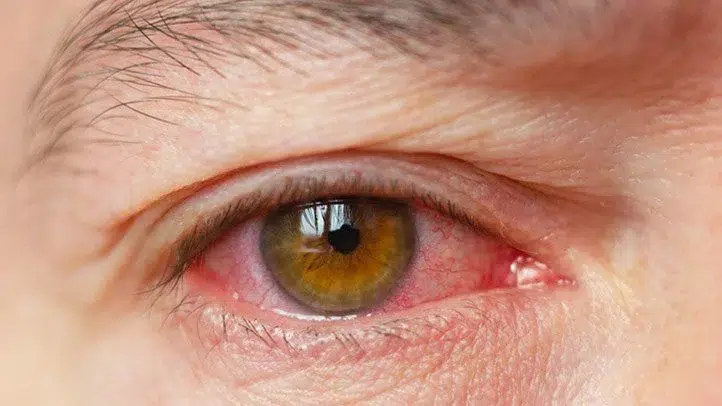Understanding Dry Eye Syndrome: Causes, Symptoms & Treatment Options

Dry Eye Syndrome (DES) is a common ailment that most people don’t know about that has plagued a great number of people as they age. If you’ve encountered chronic dryness, irritation or a gritty feeling in your eyes, you know how uncomfortable it can be. If not addressed, dry eyes can cause more severe complications, such as damage to the cornea and vision issues.
At Chase Lodge Hospital, we understand how disruptive DES can be to daily life—whether you’re struggling with screen time at work, driving, or even reading. This guide will explore the causes, symptoms, and effective treatment options available to help you manage and alleviate dry eye discomfort.
What is Dry Eye Syndrome?
Dry Eye Syndrome is when your eyes don’t make enough tears or when your tears evaporate too quickly. So it is really important that our eyes are able to keep themselves wet and safeguarded—predominantly by means of our tears—and it is also what makes us sensitive and responsive with our feelings.
Tear Film Anatomy
A healthy tear film consists of three layers:
- Water Layer (Aqueous) – This layer is made by your lacrimal glands and it is the layer that moistens the eye.
- Mucin (Mucus) Layer – Facilitates even spread of tears across the eye’s surface.
- Lipid (Oil) Layer – Secreted by the meibomian glands, this stops tears evaporating too quickly.
Types of Dry Eye Syndrome
There are two main types:
- Aqueous-deficient Dry Eye – Eyes dry out because the lacrimal glands don’t produce enough watery tears.
- Evaporative Dry Eye – The most common type, when meibomian glands become blocked and there is a lack of oil, which means tears evaporate more quickly.
Causes and Risk Factors
Several reasons cause Dry Eye Syndrome such as:
Age and Hormonal Changes
- While the tearing process slows down with increasing age, women in the post-menopause stage tear more slowly because of hormone changes.
Medications
- Antihistamines, decongestants, antidepressants, and blood pressure drugs also inhibit the production of tears.
Medical Conditions
- Autoimmune diseases such as rheumatoid arthritis and Sjögren’s syndrome or diabetes can also lead to dry eyes.
Environmental and Lifestyle Factors
- Wind, smoke, or dry air (such as from air conditioning or heating) on the face.
Extended use of screens results in less blinking and faster evaporation of tears.
Surgical Interventions
- Procedures such as LASIK can temporarily affect tear production.
Symptoms of Dry Eye Syndrome
Common signs include:
- Chronic dry, scratchy, or gritty feeling
- A feeling of burning, stinging, or itching
- Redness and inflammation
- Vision haziness, or sensitivity to light
- Tearing (this is a natural response to irritation)
How Dry Eye Syndrome is Diagnosed
At Chase Lodge Hospital, our experts perform a number of diagnostic tests, including:
- Physical Exam and Symptoms – Talking about what your symptoms are and what’s come before it in your medical history.
- Schirmer’s Test – Determines how many tears you make using a small paper strip.
- Tear Break-up Time (TBUT) – Tests the rate at which tears evaporate.
- Ocular Surface Staining – Uses special dyes to find injury.
- Meibomian Gland Evaluation – Determines how well the oil glands are functioning (evaporative dry eye).
Treatment Options
- Over-the-Counter Cure
- Lubricating eye drops (artificial tears).
- Gels & ointments (to relieve pain while you sleep).
- Prescription Treatments
- Immune-suppressing drops (such as ciclosporin).
- Medications to increase tear production.
- Procedures
- Punctal plugs – Very small inserts that close the tear drainage.
- LipiFlow or IPL Therapy – Opens the meibomian glands so they clear and replace their old, thick oils.
- Lifestyle Adjustments
- Add moisture to dry indoor air with a humidifier.
- Adhere to the 20-20-20 rule (every 20 minutes, gaze at least 20 feet away for 20 seconds).
- Make sure you are warm compressing & cleaning your eyelids at least twice daily.
Preventing Dry Eye Flare-Ups
- Wear wraparound sunglasses outside to help protect from wind.
- Keep hydrated and eat foods with omega-3 (like salmon and flaxseeds).
- Take a 20-second pause to gaze into the distance for every 20 minutes you spend staring at a screen.
When to See an Eye Specialist
- If over-the-counter products haven’t worked for you, or you have an existing medical condition, get in touch with an eye specialist to develop a treatment plan tailored just for you.
Conclusion
Beyond just a literal pain in the eyes, dry eye syndrome can severely affect your quality of life if left unmanaged. Getting prompt professional care when the symptoms occur can prevent complications and return you to comfort.
At Chase Lodge Hospital, our highly experienced team of ophthalmologists offer thorough dry eye tests and personalised treatment to help you keep your eyes in great shape. Schedule an appointment now and discover a life of better, clearer vision.